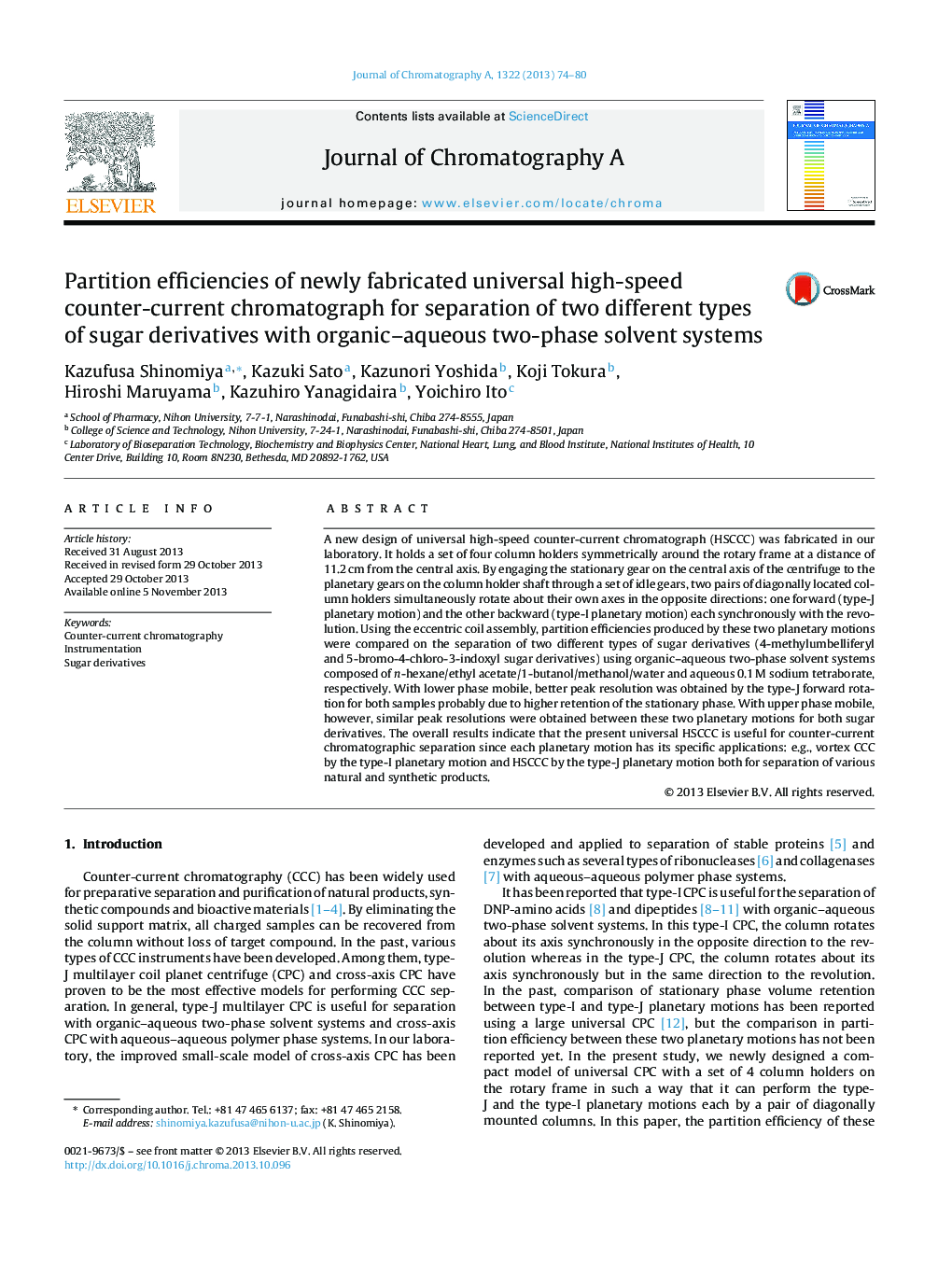| کد مقاله | کد نشریه | سال انتشار | مقاله انگلیسی | نسخه تمام متن |
|---|---|---|---|---|
| 1201053 | 1493604 | 2013 | 7 صفحه PDF | دانلود رایگان |

• New high-speed CCC system rotates neighboring columns in the opposite direction.
• Partition efficiencies between type-J and type-I planetary motions were compared.
• Separation of sugar derivatives was achieved in upper and lower phase mobiles.
A new design of universal high-speed counter-current chromatograph (HSCCC) was fabricated in our laboratory. It holds a set of four column holders symmetrically around the rotary frame at a distance of 11.2 cm from the central axis. By engaging the stationary gear on the central axis of the centrifuge to the planetary gears on the column holder shaft through a set of idle gears, two pairs of diagonally located column holders simultaneously rotate about their own axes in the opposite directions: one forward (type-J planetary motion) and the other backward (type-I planetary motion) each synchronously with the revolution. Using the eccentric coil assembly, partition efficiencies produced by these two planetary motions were compared on the separation of two different types of sugar derivatives (4-methylumbelliferyl and 5-bromo-4-chloro-3-indoxyl sugar derivatives) using organic–aqueous two-phase solvent systems composed of n-hexane/ethyl acetate/1-butanol/methanol/water and aqueous 0.1 M sodium tetraborate, respectively. With lower phase mobile, better peak resolution was obtained by the type-J forward rotation for both samples probably due to higher retention of the stationary phase. With upper phase mobile, however, similar peak resolutions were obtained between these two planetary motions for both sugar derivatives. The overall results indicate that the present universal HSCCC is useful for counter-current chromatographic separation since each planetary motion has its specific applications: e.g., vortex CCC by the type-I planetary motion and HSCCC by the type-J planetary motion both for separation of various natural and synthetic products.
Journal: Journal of Chromatography A - Volume 1322, 27 December 2013, Pages 74–80